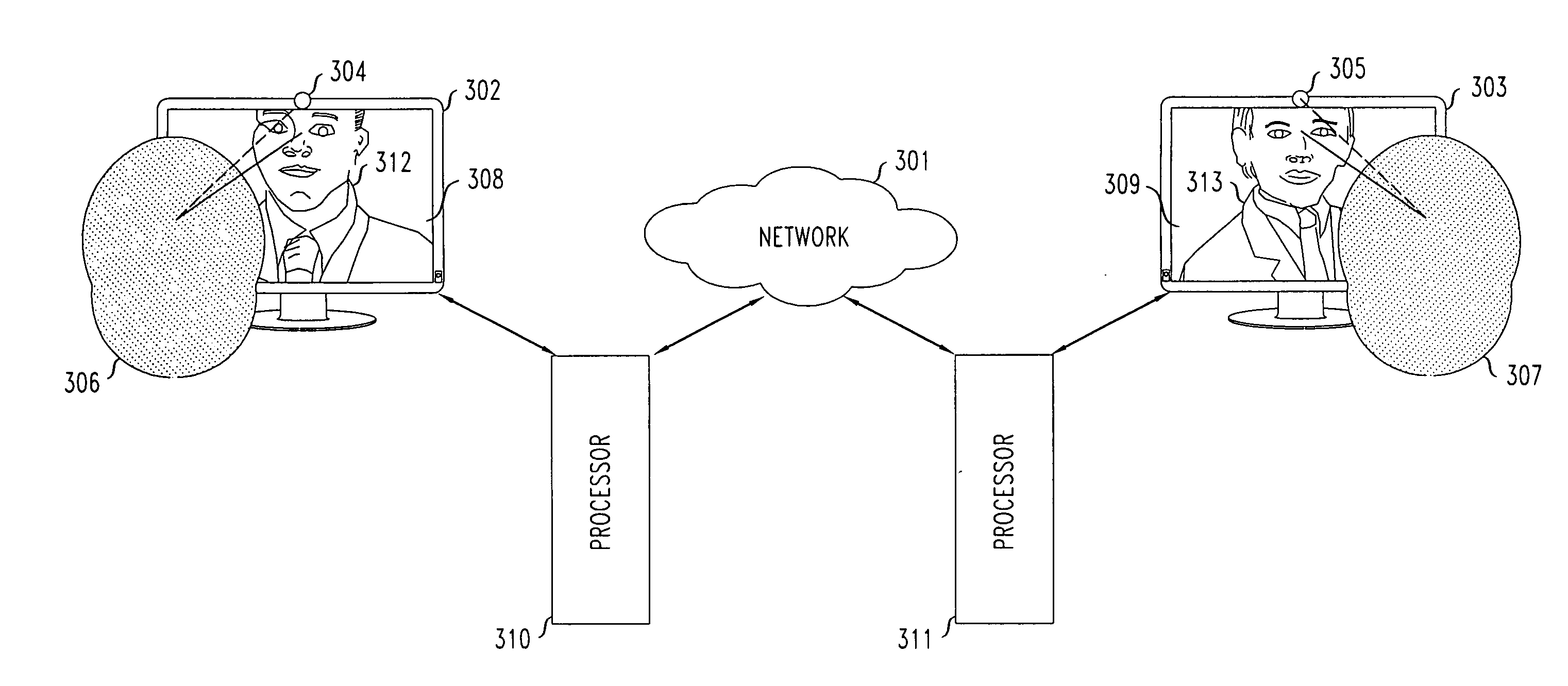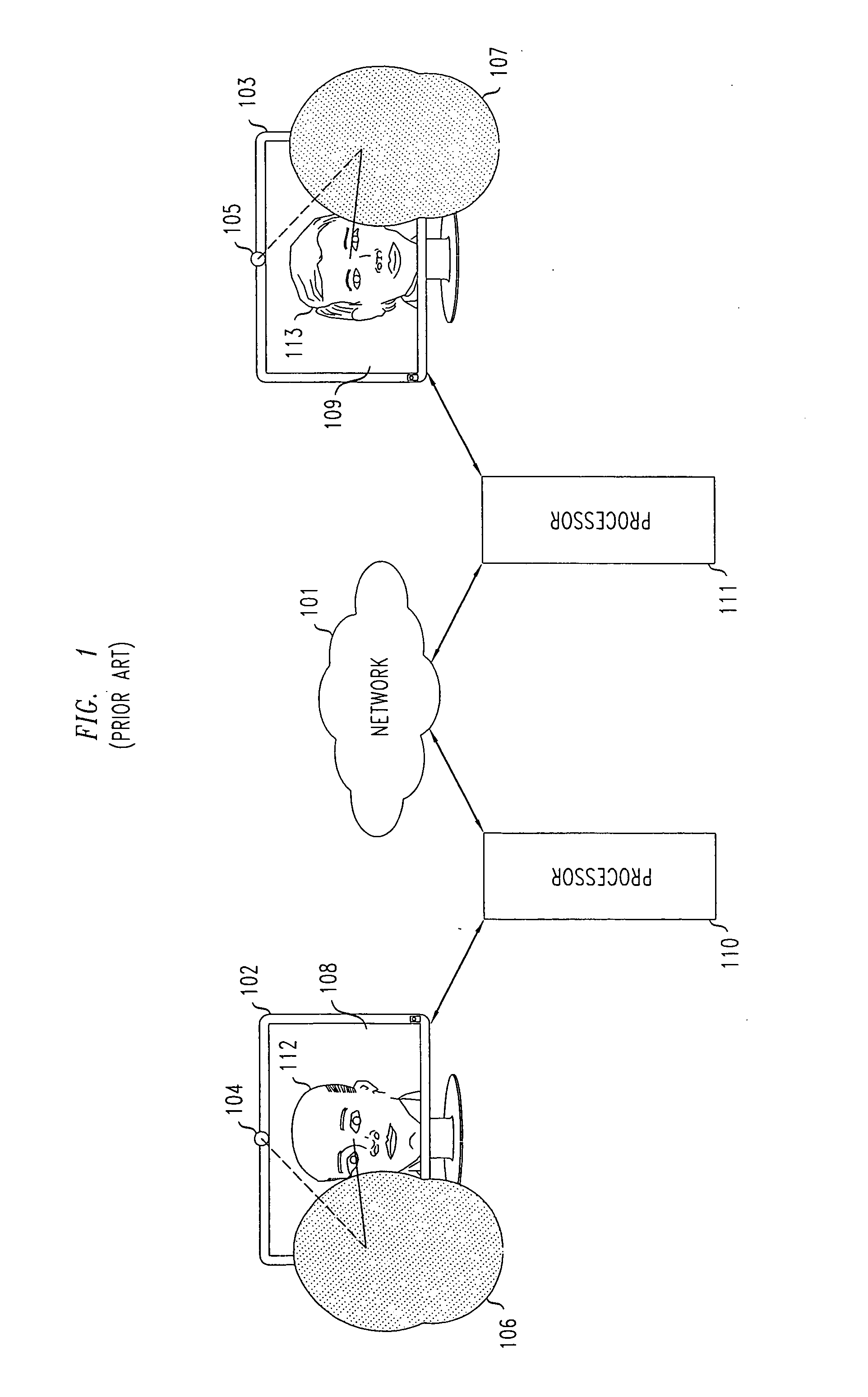Method and apparatus for enabling improved eye contact in video teleconferencing applications
a technology of video teleconferencing and eye contact, applied in the field of video teleconferencing systems, can solve the problems of not typically allowing eye contact between the participants, essentially all prior art telepresence (e.g., video teleconferencing) systems, and contact appears to work well, so as to reduce the amount of face displayed, reduce the camera angle, and move easily
- Summary
- Abstract
- Description
- Claims
- Application Information
AI Technical Summary
Benefits of technology
Problems solved by technology
Method used
Image
Examples
Embodiment Construction
[0020]FIG. 1 shows a prior art video teleconferencing environment which includes two participants who are unable to make reasonable eye contact with each other. The environment shows a video teleconference between two participants—participant 106 and participant 107. Each participant is using a computer-based teleconferencing system including a processor, a monitor with a video screen, and a video camera. As is typical, for each participant, a conventional (i.e., off-the-shelf) video camera is placed on the top of a video monitor (or, equivalently, a laptop screen), in the left-to-right center of the video screen, and is pointed slightly downward to capture one or more images (e.g., a video) of the participant.
[0021]In particular, the computer-based teleconferencing system being used by participant 106 comprises processor 110, video monitor 102 with video screen 108, and video camera 104, while the computer-based teleconferencing system being used by participant 107 comprises proces...
PUM
 Login to View More
Login to View More Abstract
Description
Claims
Application Information
 Login to View More
Login to View More - R&D
- Intellectual Property
- Life Sciences
- Materials
- Tech Scout
- Unparalleled Data Quality
- Higher Quality Content
- 60% Fewer Hallucinations
Browse by: Latest US Patents, China's latest patents, Technical Efficacy Thesaurus, Application Domain, Technology Topic, Popular Technical Reports.
© 2025 PatSnap. All rights reserved.Legal|Privacy policy|Modern Slavery Act Transparency Statement|Sitemap|About US| Contact US: help@patsnap.com



